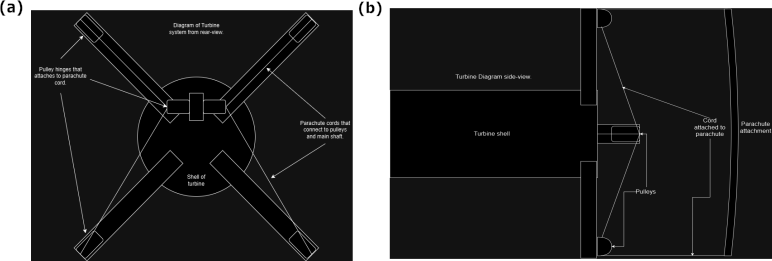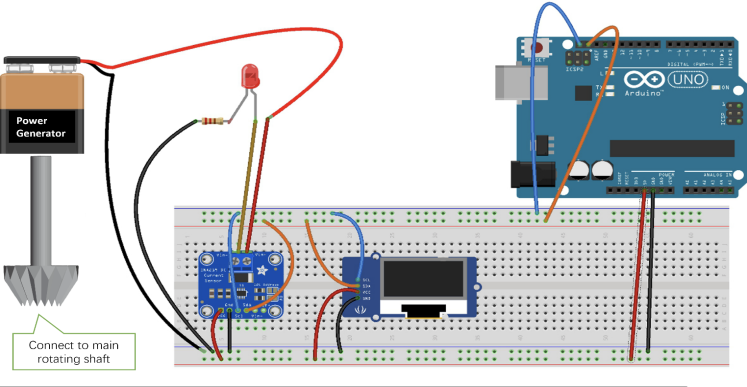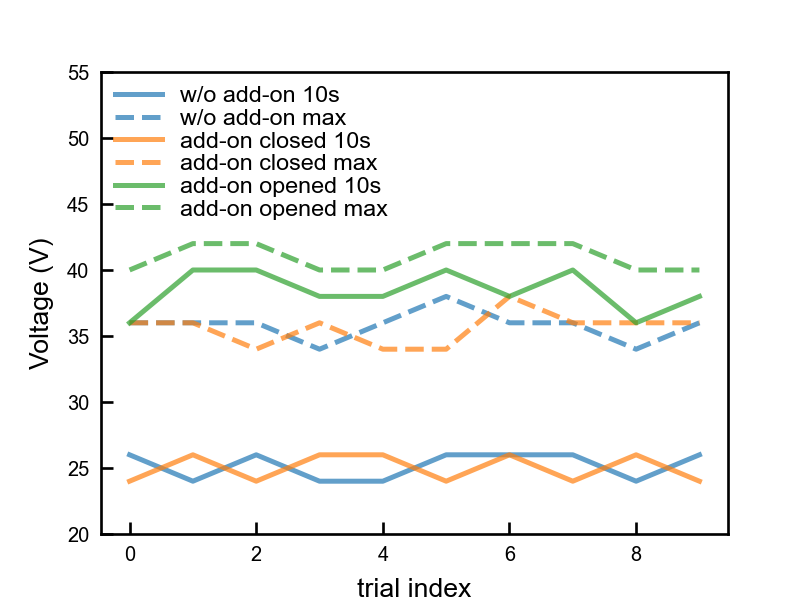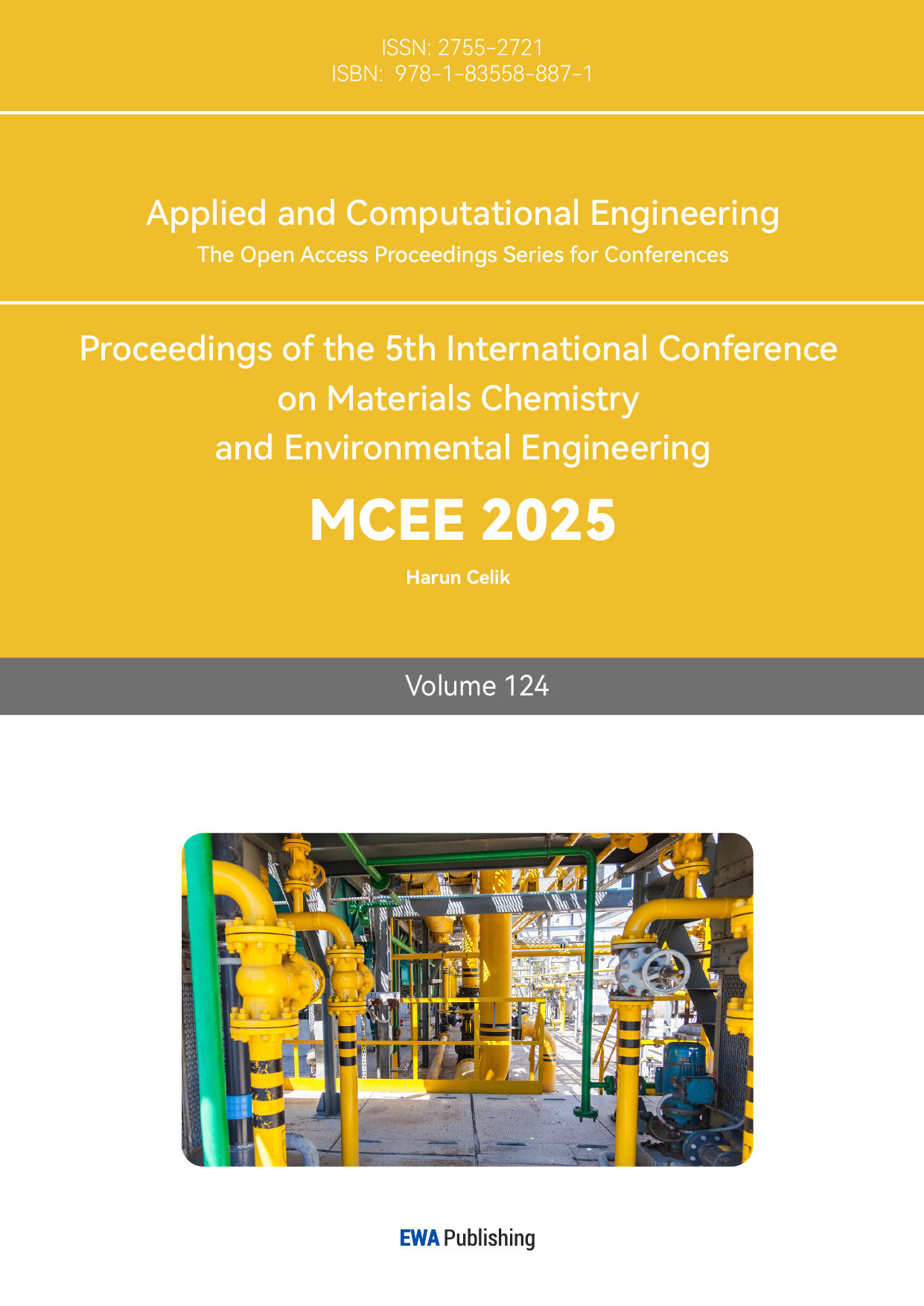1. Introduction
Environmentally stable sources of energy are the gateway for the modern world into the future of technology. The responsibility for producing more than 83% of the world's total energy consumption is still taken by fossil fuels [1], leading to billions of tons of greenhouse gasses emitted each year, the most prominent factor of global warming. "Green" energy sources such as hydroelectric, solar, and wind prove to be promising as a replacement for fossil fuels. However, efficiency limitations exist within the implications of these sources. For example, with low photoelectric conversion rate, solar power can harness the Sun's energy directly only while it been exposed to sunlight without disturbances such as clouds, dust, or fog and is currently a premature technology [2]. The main advantage of wind energy is that it is much easier to scale, being able to generate electricity in most situations [3]. This source of energy relies on one thing that is very difficult to interrupt: wind. The atmosphere's density coupled with the uneven heating of the Earth results in powerful gusts of air that carry substantial amounts of energy. However, the current largest downside of wind energy systems is their inability to harness the wind efficiently [4].
This experiment aims to test and develop a novel wind turbine form for better harnessing fluctuating wind energy. The design is meant to improve the power efficiency by harnessing more kinetic energy from the wind than what is possible with the conventional turbine, with a "parachute" add-on. The add-on that catches the remaining kinetic energy in the air behind the turbine converts the horizontal motion to rotating motion and rotates the main shaft connected to both the turbine blades and the motor itself. Therefore, this model works more efficiently in a volatile environment where the wind is fluctuating and inconsistent, which is ubiquitous.
In the subsequent sections, we first depict the design details of this novel wind turbine, followed by the direct experimental comparisons between this novel design and the conventional one. We supply some detailed analysis of the power efficiency and discussion at the end.
2. Design

Figure 1: (a) The traditional wind turbine design. (b) Our novel wind turbine design with a “parachute” add-on in the left and. (c) The interior of the novel turbine design.

Figure 2: (a) The rear view and (b) the side view of the transmission part with cords and pulleys attached to the parachute add-on.
In conventional wind turbine design [4], as illustrated in Fig. 1(a), three blades spaced 120° apart capture wind power and convert it into rotational energy. This energy is then transformed into electricity through a series of devices. However, a substantial portion of the wind energy remains untapped, with typical conversion efficiencies around 50% or less, indicating considerable potential for improvement.
In our novel design shown in Fig. 1(b), a “parachute” add-on device is installed behind the turbine blades to capture wind energy from the unused wind flow passing through the conventional turbine blades. This approach shortens the startup time for the blades, increases blade rotation speed, and does not interfere with the effect of front-facing wind on the entire blade area.
The design concept is that given the “parachute” is added behind the blades, when exposed to wind, a transmission mechanism, shown in Fig. 2, connected to the main drive shaft is triggered, accelerating the rotation of the turbine and generating additional electrical energy through the generator. The main shaft includes a bevel gear to convert the horizontal rotation to vertical one that generates the motor. The parachute pulls the cords and applies a turning force on the cuff, and hence to the main shaft. The cuff is designed to be rotating in only one direction. Effectively, the add-on transfers the wind energy from the area behind the main blades to extra electrical energy. It thus provides a feasible direction for the further optimization of wind turbines in the future.
However, a limitation of this current design is that the “parachute” needs to be set manually to its initial state each time before it can be re-activated by wind. An automatic recovery system of the add-on should be helpful and a future direction to implement.

Figure 3: Schematic setup for measuring the power output from the turbine generator.
3. Experiment
To further test our novel design, we perform a controlled experiment with using the traditional wind turbine, the novel wind turbine but with the “parachute” closed, and the novel wind turbine with the “parachute” opened, all under the same wind flow condition. The same wind flow is provided by a fan at the same distance to the wind turbines in all three cases. In each case, we record the power output at the 10th second after the start-up of the fan, and the final peak power output. The power recording is done by reading the voltage outputs generated by the turbines across a particular resistor, shown in Fig. 3.The measurement circuit consists of an INA 219 voltmeter, an OLED display, and an Arduino UNO R3 resistor, connecting to the power generator to measure the voltage across the resistor in real time.
For each configuration, we repeat the measurement for 10 times, and we obtain the measured voltages as shown in Fig. 4. It is obvious that the case with traditional turbine (without the add-on) shows roughly the same output voltage both after 10 seconds operation and in the final maximum rotation speed as the one with the add-on but closed. However, with the add-on opened, we observe both a significant increase after 10 seconds operation and a higher power output at the final phase. This indicates that installing our add-on device does not affect the normal operation of the blades in a conventional generator and can significantly improve the power efficiency of conventional wind turbines.

Figure 4: Voltage measured for cases without the add-on, with the add-on closed and with the add-on opened, at the 10th second and at the final max operational speed.
4. Analysis
The novel design presented here aims to optimize the wind energy in the following way. Generally, each wind turbine operates within a defined power curve threshold that can be divided in three phases as shown in Fig. 1 of Ref. [5]. When the wind speed is above an upper threshold, the turbine outputs the maximum power. When the wind speed is below a lower threshold, the output power is zero due to inherent friction of the turbine. When the wind speed is between these two bounds, the power curve is a monotonic function of the wind speed. Therefore, when the wind speed starts to increase within this range, the output power increases as well. This novel wind turbine design generally elevates the power output in this ramping phase by introducing this "parachute" add-on. When comparing the 10 second data shown in Fig. 4, the add-on device indeed increases the power efficiency in this ramping phase, effectively shortening the time for the blades to rotate to the high speed. Moreover, there is an overall final phase efficiency boost due to the fact that this add-on effectively increases the turbine area for wind energy conversion.
Therefore, this add-on device allows for excess wind energy to be harnessed, but currently one drawback is that successive usage of the add-on is not possible. The parachute system only works on the initial gusts of wind, but will remain fully extended if the windspeed does not become lower enough for the parachute to return to its original position. Furthermore, the current demonstration is done with parts made by a 3D printer, which should be further replaced with low friction parts machined with more profession for extensive usage of this design. Additionally, another limitation can be related to the aerodynamics from the parachute behind the turbine. Because wind flows from high pressure areas to low pressure, the presence of the “parachute” may induce slower moving air currents behind the turbine, representing a higher-pressure zone according to Bernoulli’s principle. This would cause less air flow through the turbine and thus more detailed aerodynamics simulation may be useful for further investigation of this novel design.
5. Conclusion
In conclusion, the novel wind turbine design with a "parachute" add-on presents a promising advancement in harnessing wind energy more efficiently than traditional methods. By capturing additional kinetic energy from wind passing through and behind the conventional turbine blades, this design showcases an increase in power output, particularly during the initial low wind speed phase, indicating advantages in fluctuating wind conditions common in the real world. While the prototype demonstrates a significant boost in efficiency, several challenges remain, including the need for an automatic reset system for the "parachute" and addressing aerodynamics issues related to airflow dynamics. With further refinement and the use of more durable, low-friction components, the potential for this innovative approach to contribute to cleaner, sustainable energy production appears significant. Future efforts might focus on overcoming these technical challenges and conducting comprehensive assessments of the prototypes to fully realize the design's capabilities and integrate it into existing renewable energy infrastructures.
References
[1]. Holechek, Jerry L., et al. "A global assessment: can renewable energy replace fossil fuels by 2050?." Sustainability 14.8 (2022): 4792.
[2]. Şen, Zekai. "Solar energy in progress and future research trends." Progress in energy and combustion science 30.4 (2004): 367-416.
[3]. Bothun, G., and B. Bekker. "Wind scalability and performance in the real world: a performance analysis of recently deployed us wind farms." Handbook of Renewable Energy. Springer, Heidelberg (2015).
[4]. Schubel, Peter J., and Richard J. Crossley. "Wind turbine blade design." Energies 5.9 (2012): 3425-3449.
[5]. Sohoni, Vaishali, S. C. Gupta, and Rajesh K. Nema. "A critical review on wind turbine power curve modelling techniques and their applications in wind based energy systems." Journal of Energy 2016.1 (2016): 8519785.
Cite this article
Tang,E. (2025). Harnessing More Power of Wind with a Novel Wind Turbine Design. Applied and Computational Engineering,124,10-14.
Data availability
The datasets used and/or analyzed during the current study will be available from the authors upon reasonable request.
Disclaimer/Publisher's Note
The statements, opinions and data contained in all publications are solely those of the individual author(s) and contributor(s) and not of EWA Publishing and/or the editor(s). EWA Publishing and/or the editor(s) disclaim responsibility for any injury to people or property resulting from any ideas, methods, instructions or products referred to in the content.
About volume
Volume title: Proceedings of the 5th International Conference on Materials Chemistry and Environmental Engineering
© 2024 by the author(s). Licensee EWA Publishing, Oxford, UK. This article is an open access article distributed under the terms and
conditions of the Creative Commons Attribution (CC BY) license. Authors who
publish this series agree to the following terms:
1. Authors retain copyright and grant the series right of first publication with the work simultaneously licensed under a Creative Commons
Attribution License that allows others to share the work with an acknowledgment of the work's authorship and initial publication in this
series.
2. Authors are able to enter into separate, additional contractual arrangements for the non-exclusive distribution of the series's published
version of the work (e.g., post it to an institutional repository or publish it in a book), with an acknowledgment of its initial
publication in this series.
3. Authors are permitted and encouraged to post their work online (e.g., in institutional repositories or on their website) prior to and
during the submission process, as it can lead to productive exchanges, as well as earlier and greater citation of published work (See
Open access policy for details).
References
[1]. Holechek, Jerry L., et al. "A global assessment: can renewable energy replace fossil fuels by 2050?." Sustainability 14.8 (2022): 4792.
[2]. Şen, Zekai. "Solar energy in progress and future research trends." Progress in energy and combustion science 30.4 (2004): 367-416.
[3]. Bothun, G., and B. Bekker. "Wind scalability and performance in the real world: a performance analysis of recently deployed us wind farms." Handbook of Renewable Energy. Springer, Heidelberg (2015).
[4]. Schubel, Peter J., and Richard J. Crossley. "Wind turbine blade design." Energies 5.9 (2012): 3425-3449.
[5]. Sohoni, Vaishali, S. C. Gupta, and Rajesh K. Nema. "A critical review on wind turbine power curve modelling techniques and their applications in wind based energy systems." Journal of Energy 2016.1 (2016): 8519785.









